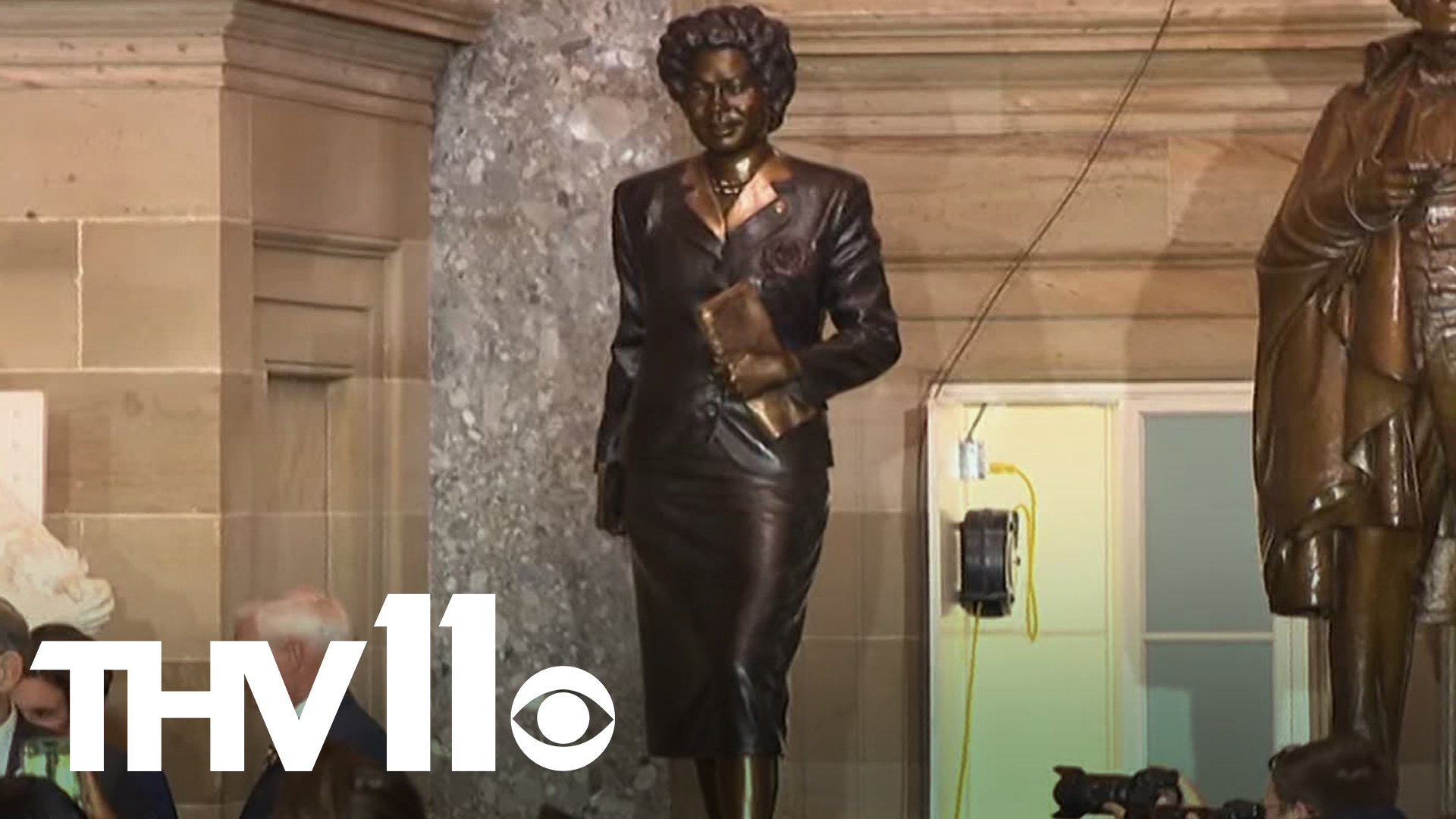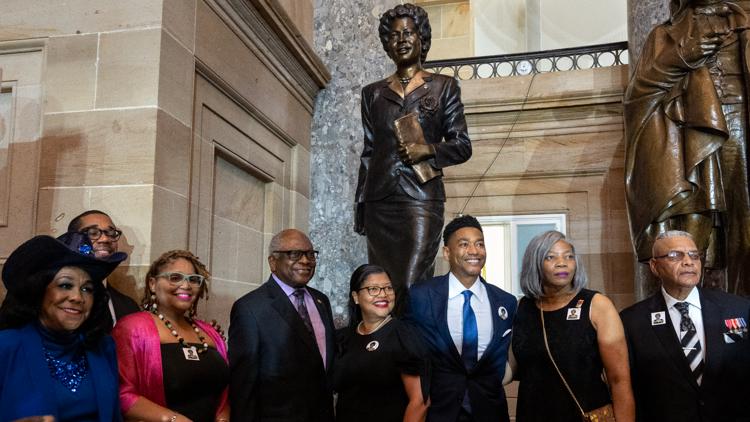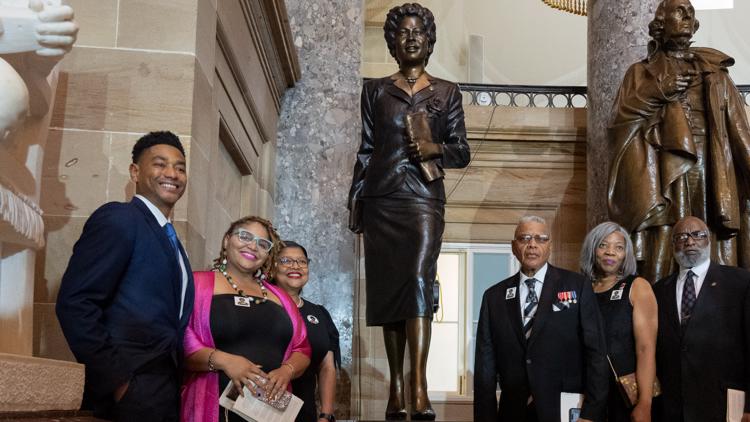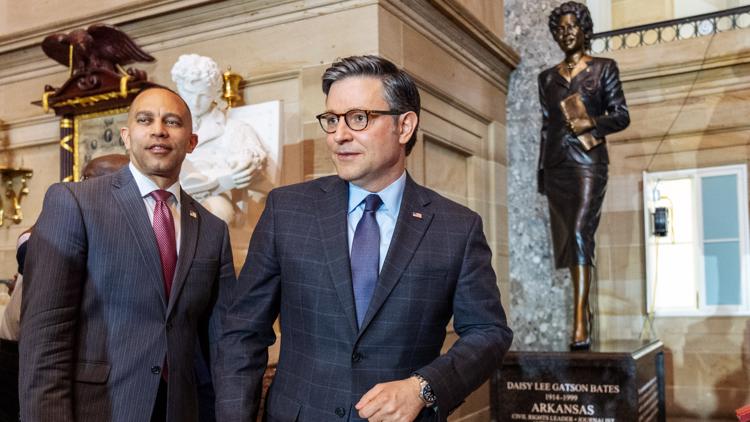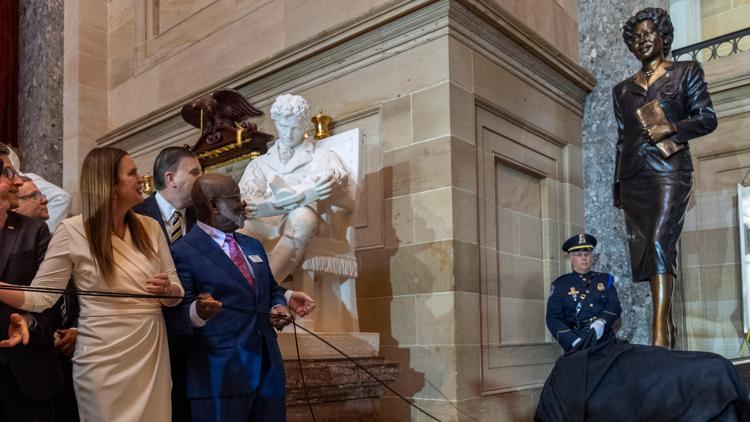WASHINGTON D.C., DC — On May 8, 2024, Arkansas Civil Rights icon Daisy Gatson Bates took her place among some of our nation's heroes at Statutory Hall in Washington, D.C.
About five years ago, lawmakers in the state made the decision to replace the statues representing Arkansas at the U.S. Capitol.
They decided that rather than the state being represented by two "little-known" figures from the 18th and 19th centuries, Arkansas would instead be represented with statues showcasing two iconic Arkansans: Daisy Gatson Bates, a woman who was instrumental in the fight over school desegregation, and the "Man in Black" himself.
The statue of Daisy Bates was unveiled on Wednesday and the one of Johnny Cash will be installed later on in the year.
A sculptor from Idaho named Benjamin Victor was chosen to create the statue of Bates and he explained that before he began his work on the statue he studied her extensively by reading her 1962 autobiography and even visiting her Little Rock home and Central High.
“I hope it really first and foremost inspires them to study Daisy Bates' life and legacy,” Victor said. “A big part of it is to capture that spirit of hers and inspire others to do the same and stand up for what’s right.”
He worked on the eight-foot-tall bronze statue for more than a year before it was finally unveiled at the U.S. Capitol.
Governor Sarah Huckabee Sanders was in attendance at the unveiling and she expressed that it was a privilege to be in the nation's capitol representing the Natural State and to honor Daisy Bates.
"It's no surprise that even after she is gone, Daisy is still bringing people together," she explained.
Many of Ms. Bates's relatives and friends were also in attendance including Charles King, the President of the Daisy Bates House Museum Foundation Board.
"[They are] living reminders that though Daisy is no longer with us, her legacy and her impact live on," she added.
She also expressed that we remember the heroism of the Little Rock Nine who first desegregated Central High School and how Daisy was always right there with them.
"There was a fire inside this woman, but she did not use it to burn our state down, instead she used it to bring light to our darkest corners," said Gov. Sanders.
Charles King, President of the Daisy Bates Museum explained how Langston Hughes, an American poet, and activist was a prelude to Daisy Bates with his "Song of America."
"The Song of America was not the tune for Daisy Bates. I have to believe that the almighty had a bigger and better song for Daisy," he added.
He explained how the "America" that Daisy sang and the "America" that America sang were two different songs, until now.
Now that the statue has been unveiled, he said that both America and the world will finally see how beautiful "America" is when they see Daisy Lee Gatson Bates.
“Outside of Arkansas, Daisy Bates is less well known but today we change that. This beautiful statue and this ceremony are a great place for us to start to tell her story,” Gov. Sanders added.
If you're interested in learning more, the Mosaic Templars Cultural Center in Little Rock now has a new permanent exhibit that features Daisy Bates and other notable Arkansas figures.

